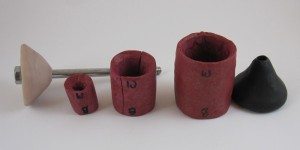
Less long ago than geometry, I taught calculus. I remember having a bit of trouble with volumes by shells and slicing when I was learning calculus. A curve is rotated around a line to delineate a three-dimensional object, and the goal is to find to volume of the object. For example, a semicircle rotated around the line that joins its tips gives a sphere. Shells and slicing are the two general methods to find the volume. When I taught them as a graduate student I thought it might help to have physical instantiations of some of the regions we might find volumes for, in a form that could come to pieces in either cylindrical shells or sliced disks. Intuition is often helped by seeing some concrete examples in explicit detail. Enter the hardware and craft stores.
The slicing method is the more straightforward of the two; partition the object into disks by slicing through it perpendicular to the axis of rotation. Find the volume of each disk and add them up, using limits and hence integrals to make this precise.
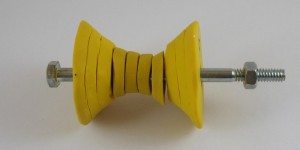
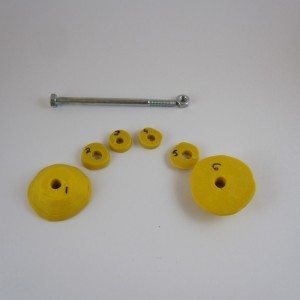
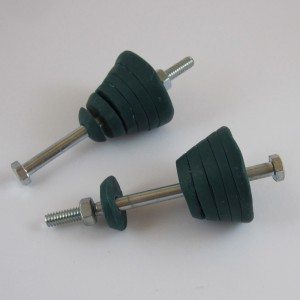
The shell method is what tends to trip people up. Sometimes the slicing method is a no go, and in that case you can peel layers off from around the outside of the volume as though peeling the label off a bottle. These layers are called shells and are cylinders with the axis of rotation through their center. Again you can find the volume of each cylinder and add them up, passing to the limit/integral for precision. Two models are shown below, and the picture heading this entry is a third.
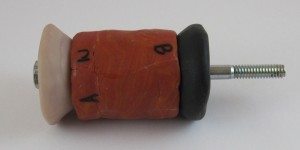
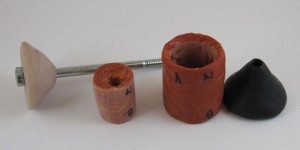
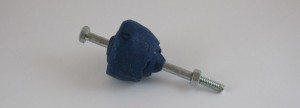
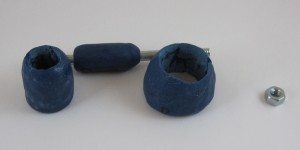
I made these models with nuts, bolts, Sculpy, and aluminum foil, baking the clay with the bolt through the middle. I don’t remember how many layers of foil I used, but I would make it at least 2 for the space needed to dismantle these easily and without risking breakage. Two layers around the bolt and two between each shell. The slices can be spaced apart for baking, so they don’t need foil separators.
It’s been a long time since I taught volumes of revolution, and I think they may have been slightly helpful for some students, but they were not the breakthrough I would have wished. I think that was due partially to how I made them in particular, though. Were I to do it again I would go much larger scale. That would allow me to demonstrate them from the front of the classroom before passing them around, mitigate the problems of inexactness, and permit more layers in the shell case, all of which would help. I might even make the shell models out of fabric, stiffened with interfacing and padded with quilt batting.
It seems likely to me there are some computer animations that attempt to convey the same ideas as these, but I haven’t seen them – there are so many animations I would have made for teaching calculus had I had any idea where to start in creating them. However, for some students, nothing compares to putting their hands on something, so I perhaps putting this idea out in the ether can help someone who’s trying to help such a student.